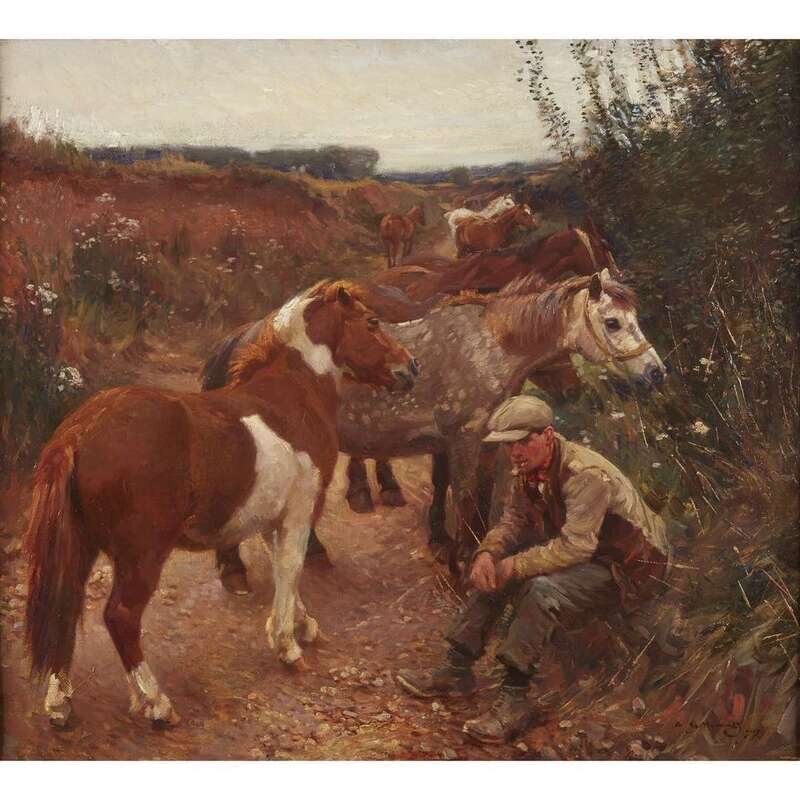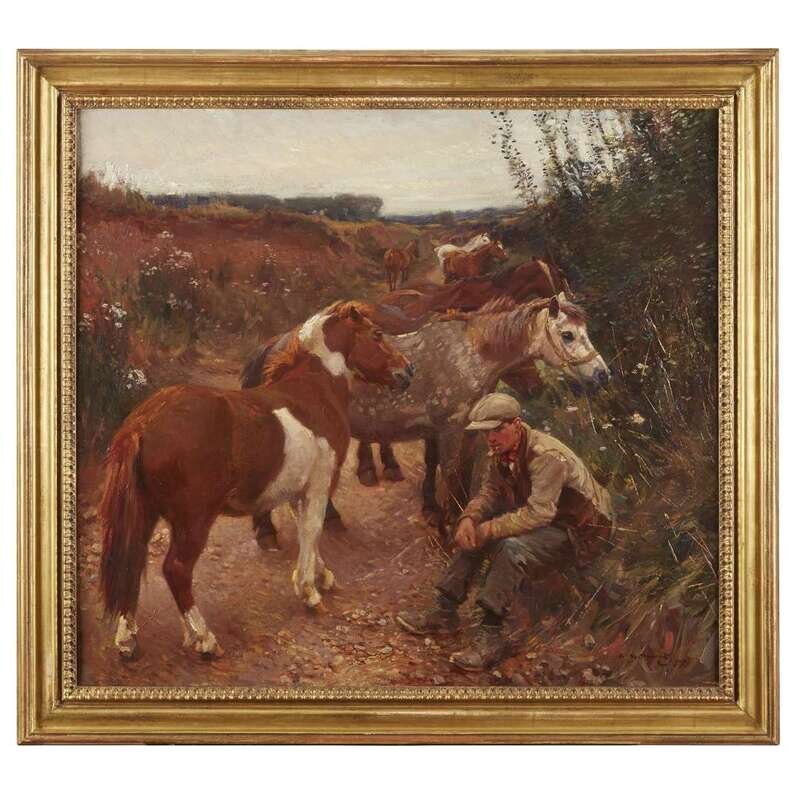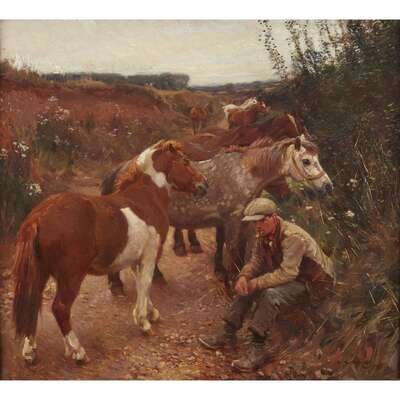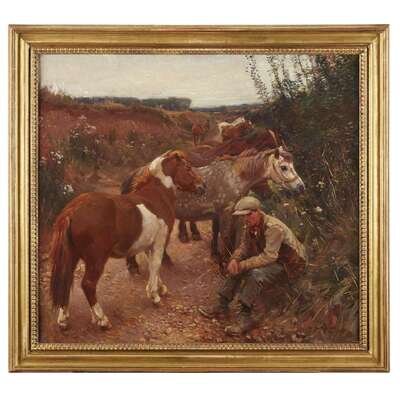Condition Report
Contact Information
Lot 39
Sir Alfred Munnings (British, 1878–1959) Irish Ponies in a Grassy Lane
Sale 5353 - European Art & Old Masters: 500 Years
Feb 27, 2019
7:00AM ET
Live / Philadelphia
Own a similar item?
Estimate
$300,000 -
500,000
Price Realized
$250,000
Sold prices are inclusive of Buyer’s Premium
Lot Description
Sir Alfred Munnings (British, 1878–1959) Irish Ponies in a Grassy Lane



